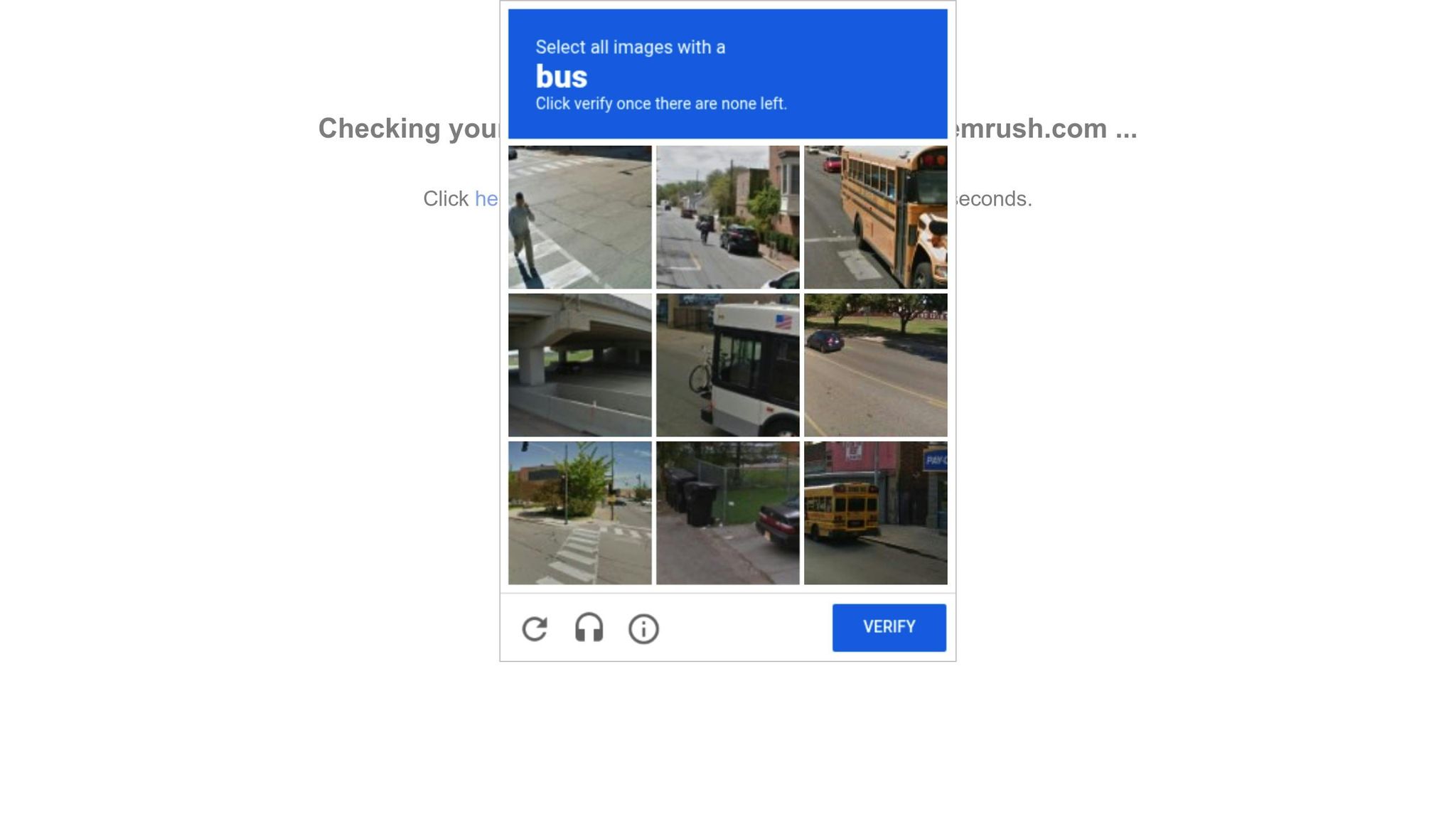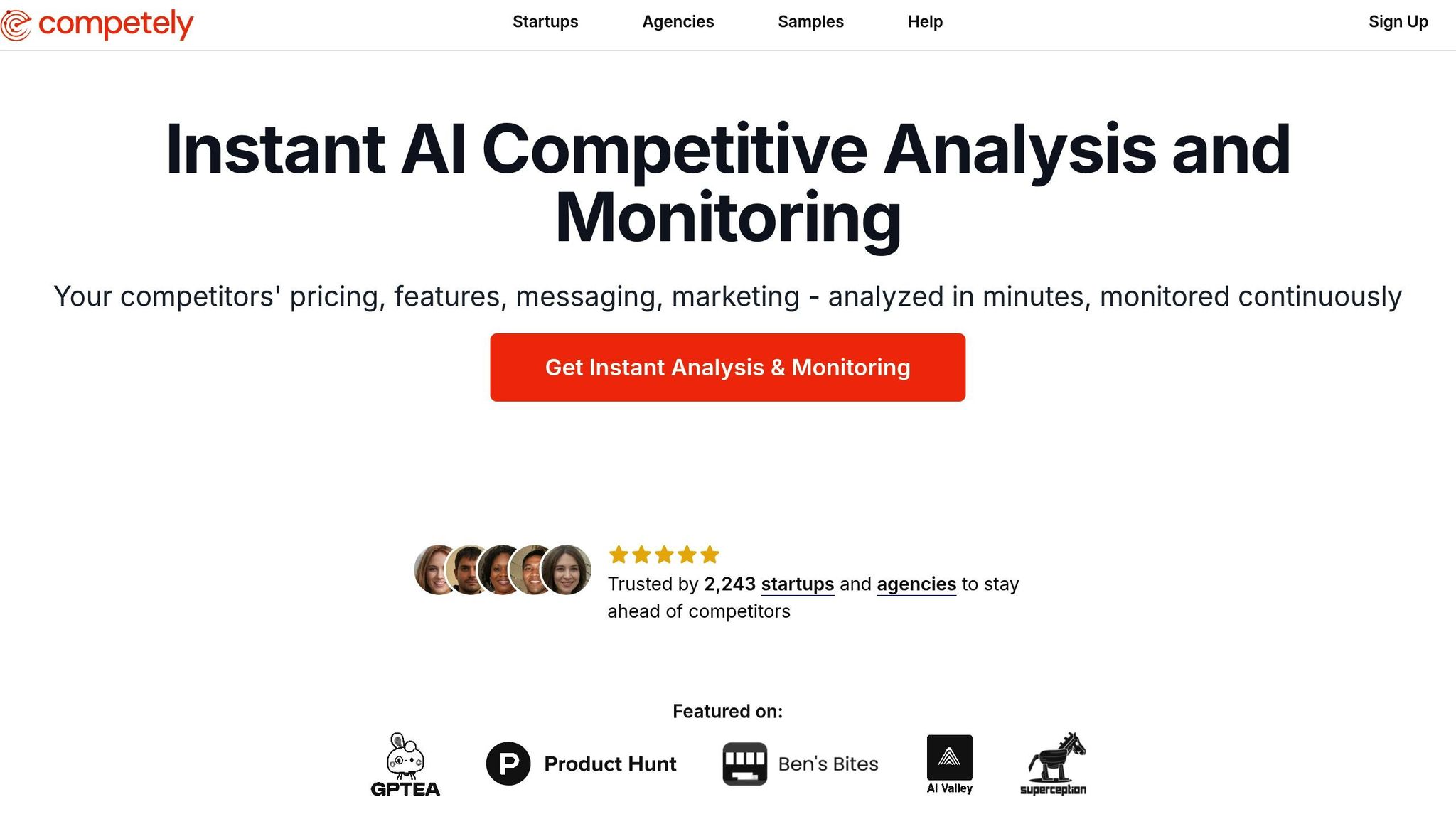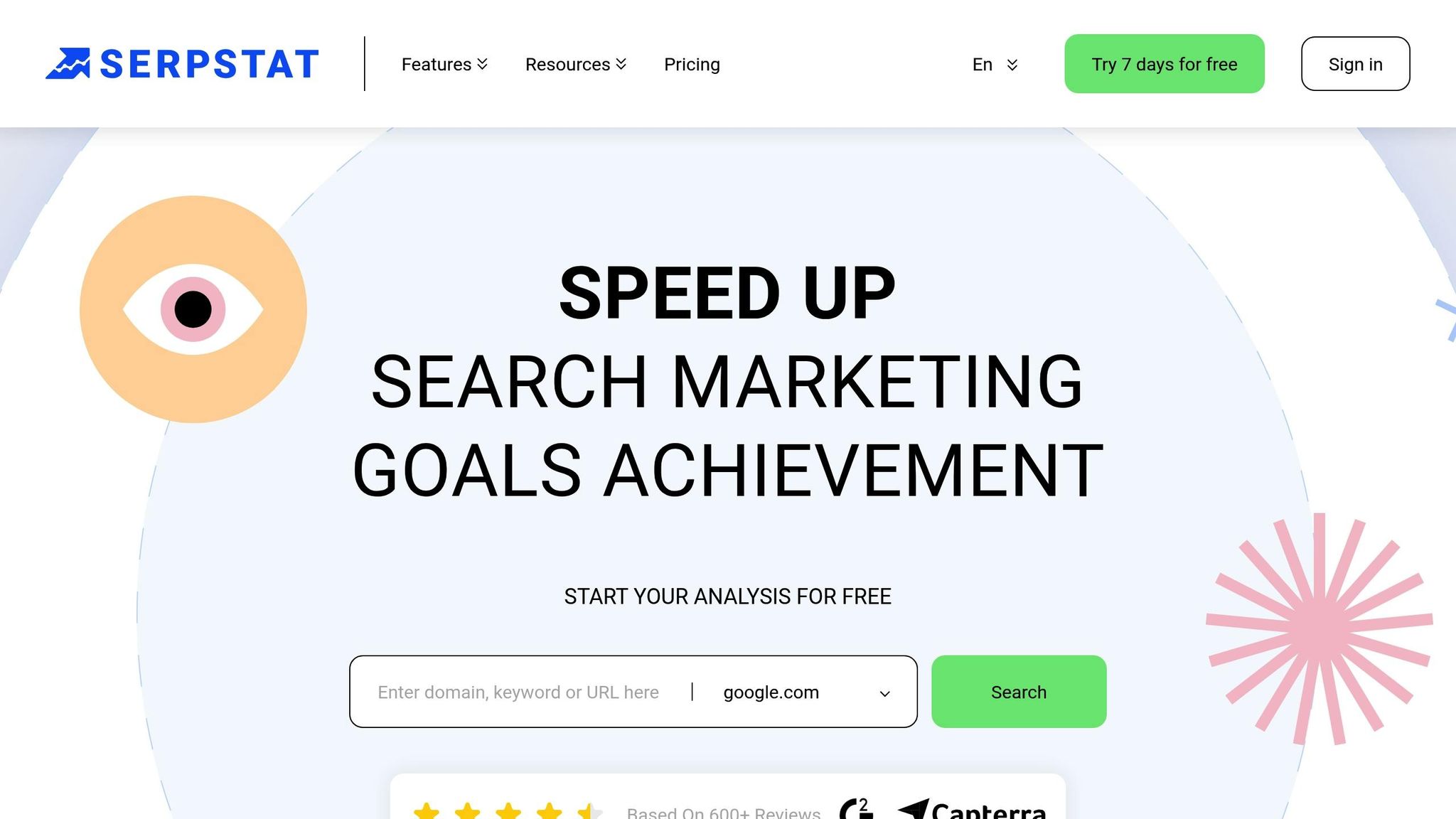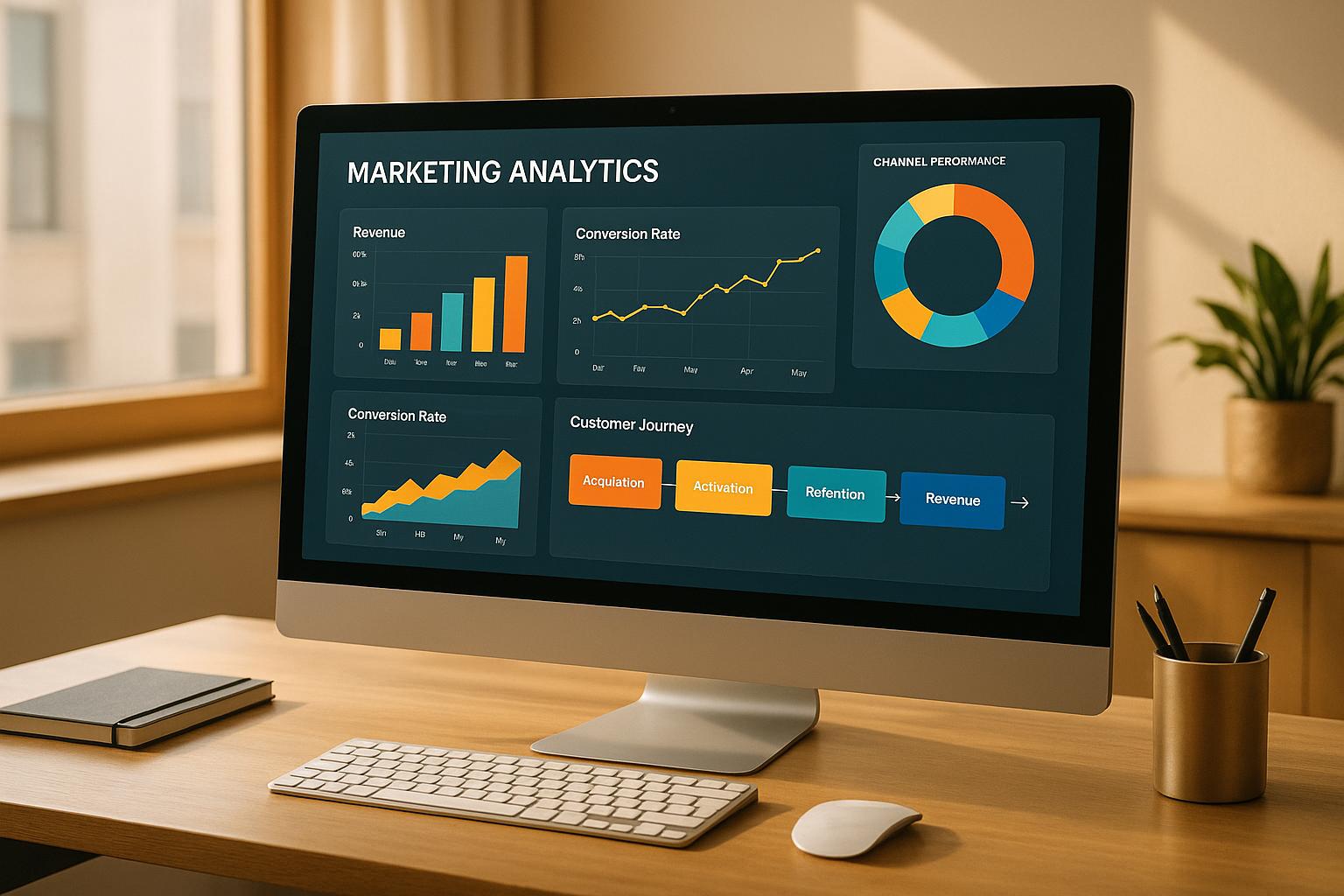Competitor market share tools help businesses analyze rivals' strategies, track industry trends, and optimize marketing efforts. These tools provide insights into website traffic, audience demographics, keyword rankings, and advertising performance. Popular options include Similarweb, Semrush, Competely.ai, and Serpstat. Each tool caters to different needs, from robust analytics for large enterprises to budget-friendly solutions for smaller businesses. Here's a quick overview:
- Similarweb: Best for large businesses needing detailed market data; starts at $199/month.
- Semrush: Offers SEO and competitive intelligence; plans start at $119.95/month.
- Competely.ai: AI-driven, affordable for startups; starts at $9/month.
- Serpstat: Focused on SEO, ideal for small to medium businesses; starts at $69/month.
These tools can improve decision-making, identify opportunities, and keep you ahead in competitive industries.
These 9 TOOLS Will Help You SPY On Your Competitors
1. Similarweb
Similarweb stands out as a powerful tool for analyzing competitor market share. By processing 10 billion digital signals daily with the help of 200 data scientists, it provides detailed insights across areas like Digital Research, Marketing, Sales, Stock, and Shopper Intelligence.
Market and Traffic Analytics
At the heart of Similarweb’s utility is its market and traffic analytics. It compiles traffic data - such as visits and engagement metrics - so businesses can measure competitor performance, benchmark against top industry players, and identify emerging trends. For example, U.S. digital marketing consultants frequently use the tool to evaluate client websites, pinpoint performance gaps, and explore growth opportunities. Handling 2 TB of data every day, Similarweb ensures businesses have access to timely market and competitor insights. Additionally, it simplifies the process of identifying competitors and tracking their strategies.
Competitor Discovery and Tracking
With Similarweb, identifying and monitoring competitors is a seamless process. The platform allows users to uncover both direct and indirect competitors within specific industries, track their digital activities over time, and set alerts for major shifts in competitor strategies. Beyond monitoring rivals, it also sheds light on visitor behaviors, offering a more complete picture of market dynamics.
Audience and Channel Insights
The tool delivers detailed insights into audience demographics, interests, and preferred digital channels, such as search engines, social media, direct traffic, and referrals. For instance, a U.S.-based retailer might discover that competitors are driving substantial traffic through social media. This insight could lead to strategic shifts aimed at leveraging untapped opportunities.
Reporting and Integration
Similarweb’s reporting features make it easy to share and integrate data. Users can create custom dashboards, export reports in CSV or PDF formats, and utilize API support for seamless integration with business intelligence systems. This flexibility allows U.S. businesses to incorporate Similarweb’s insights into broader analytics workflows, ensuring teams across departments stay informed. However, while the platform excels in providing broad market intelligence, it may not always deliver the level of detail needed for niche industries.
With plans starting at $199 per month for the Starter package, Similarweb is a strong choice for medium to large businesses looking for reliable competitor insights to guide strategic decisions and maintain an edge in the market.
2. Semrush

Semrush, like Similarweb, offers a powerful suite of tools for competitor analysis, but its .Trends platform takes a unique approach to tracking market dynamics. This platform combines four key components, providing businesses with actionable intelligence. Major brands such as Airbnb and Expedia rely on Semrush .Trends to fine-tune their marketing strategies and stay ahead of the competition.
Market and Traffic Analytics
The Traffic Analytics tool delivers detailed metrics on traffic and engagement across various channels, including organic, paid, referral, direct, and social. Complementing this, the Market Explorer tool offers industry-specific reports, competitor comparisons, and growth quadrant analysis. For instance, Semrush identified in 2022 that industries like e-commerce, finance, healthcare, technology, and travel were among the most competitive for digital marketing. The platform also provides historical data, making it easier to track competitors' market share and performance over time. Adding to these capabilities, the EyeOn feature enables real-time monitoring of competitors' activities.
Competitor Discovery and Tracking
The EyeOn feature is a standout, offering real-time updates on competitors' backlinks, ad campaigns, and social media signals. Automated alerts ensure that businesses are always informed about changes in the competitive landscape without needing constant manual checks. Once competitors are identified, users can track keyword rankings and monitor campaigns for a more comprehensive analysis.
Audience and Channel Insights
The One2Target tool focuses on audience analytics, offering detailed demographic breakdowns, insights into audience interests, and data on competitor audience overlap. It also highlights channel-specific performance, showing which platforms drive the most traffic for competitors. These insights can help refine marketing strategies. For example, if a competitor is excelling in paid search while your focus is on organic channels, shifting your approach could uncover new opportunities.
Reporting and Integration
Semrush supports streamlined reporting and integration, featuring customizable dashboards, automated reports, and export options in PDF and Excel formats. It also integrates with popular tools like Zapier, Google Analytics, and Google Data Studio, making it easier to manage analytics and track performance in one place. According to Semrush, 71% of online marketers use competitor analysis tools to shape their strategies, with Semrush .Trends being a top choice.
Pricing starts at $119.95 per month for the Pro plan, $229.95 per month for the Guru plan, and $449.95 per month for the Business plan. For Enterprise customers, custom options are available. The .Trends add-on unlocks full access to competitive intelligence tools, making it a comprehensive solution for businesses looking to dive deep into competitor analysis.
3. Competely.ai

Competely.ai takes a modern approach to competitor analysis by skipping the manual work and automating the entire process with AI. Acting as an AI-driven competitive intelligence tool, it analyzes over 100 data points automatically, making it perfect for businesses that need quick and detailed insights.
Competitor Discovery and Tracking
One standout feature is the Competitive Radar, which automates competitor discovery and continuous tracking. All you need to do is provide your product's URL or description, and Competely.ai identifies relevant competitors for you. It doesn’t stop there - it re-analyzes these competitors every 2–4 weeks, keeping you updated on any strategic changes.
What sets this apart is its focus on meaningful updates, avoiding unnecessary alerts for minor tweaks. Users receive email updates that highlight strategic insights, potential risks, and opportunities. Each data point comes with its source, so you can verify the information and dig deeper when needed.
Market and Traffic Analytics
Competely.ai dives into essential market metrics like user numbers, paying customers, revenue, market size, growth rates, and market share. By crawling competitor websites and online sources, it collects up-to-date data and tracks trends over time. This helps businesses see whether their competitors are gaining traction or losing ground in specific areas, offering a clearer picture of market dynamics.
Audience and Channel Insights
For audience analysis, the platform breaks down demographics, acquisition channels, and communication strategies. When it comes to channels, it examines competitors’ keywords, marketing efforts, social media activity, influencer collaborations, PR strategies, and event marketing. These insights help businesses refine their approach, tap into new audience segments, and adopt more effective channel strategies. All of this information integrates seamlessly into Competely.ai’s reporting tools.
Reporting
Competely.ai prioritizes actionable insights over overwhelming data dumps. Users receive automated email updates and can export reports in CSV or PDF formats. Each update highlights the most important changes and their strategic implications, saving time and effort.
Pricing starts at a discounted rate of $9 per month, with regular plans ranging from $39 to $69 per month, all on a month-to-month basis with no long-term contracts. While there’s no free trial due to the AI’s processing demands, all plans include continuous Competitive Radar monitoring, ensuring you stay informed.
sbb-itb-5174ba0
4. Serpstat

Serpstat stands out as a versatile and budget-friendly platform, designed to deliver in-depth SEO and competitor analysis. It combines market research, keyword tracking, and competitive intelligence, drawing on data from over 230 Google regions and a massive database of 5.2 billion keywords.
With pricing starting at just $69 per month for its Lite plan, Serpstat is an affordable option for small and medium-sized businesses looking for powerful competitor analysis tools without stretching their budgets. The platform is trusted by over 800,000 users worldwide and boasts an impressive 4.6/5 rating on G2.
Market and Traffic Analytics
Serpstat provides a detailed look at website performance and market positioning through its analytics suite. It tracks organic and paid keyword rankings, estimates traffic volumes, and monitors visibility trends over time. This data helps businesses benchmark their performance against competitors and stay informed about market shifts.
The domain analysis feature breaks down traffic sources, offering a clear view of how much traffic comes from organic search, paid ads, social media, and referrals. For U.S. users, all data is formatted with familiar conventions (e.g., dollar symbols for revenue, MM/DD/YYYY dates, and comma-separated numbers).
For large-scale market research, the batch analysis tool is a game-changer, allowing users to compare up to 200 domains simultaneously. This feature is perfect for businesses that need to evaluate entire competitive landscapes rather than focusing on individual rivals.
Competitor Discovery and Tracking
Serpstat simplifies competitor identification. By entering your domain, you can instantly generate a list of competitors based on keyword overlap and domain comparisons. This feature uncovers not only direct competitors but also indirect ones that might otherwise go unnoticed.
The platform's tracking features go beyond basic monitoring. It keeps tabs on competitors' keyword rankings, backlink profiles, and advertising strategies. Automated weekly or monthly reports summarize significant changes, helping businesses identify new threats or opportunities quickly.
The keyword gap analysis tool is particularly insightful, highlighting keywords that competitors rank for but your business hasn't targeted yet. This allows marketing teams to focus their efforts on high-value opportunities already proven to drive traffic in the market.
Audience and Channel Insights
Serpstat categorizes keywords by intent - such as informational, commercial, or transactional - offering a better understanding of what drives competitor traffic. This insight helps businesses refine their own content strategies to align with audience needs.
The platform also reveals which marketing channels generate the most traffic for competitors. For example, if a competitor relies heavily on paid search campaigns, businesses can adjust their Google Ads budgets to stay competitive. Additionally, Serpstat monitors social media mentions and referral traffic, providing a full picture of competitor marketing strategies.
Seasonal search trend analysis is another valuable feature, helping businesses identify patterns and emerging topics in their industry. This is especially useful for planning campaigns around U.S. holidays, shopping seasons, or key industry events.
Reporting and Integration
Serpstat makes it easy to export reports in formats like CSV, PDF, or XLSX, and it offers API integration for syncing data with other analytics tools. This allows businesses to create unified dashboards that combine competitive intelligence with internal performance metrics, ensuring a comprehensive view of their market position.
The site audit tool is another standout feature, identifying over 60 types of SEO issues. This helps businesses pinpoint not only what competitors are excelling at but also where they may be falling short. These insights can guide businesses toward gaining a competitive edge through better website optimization.
Advantages and Disadvantages
Each tool has its own strengths and limitations, making the best choice dependent on your specific needs and budget. Below is a comparison table and summaries to highlight the key benefits and drawbacks of each platform.
Similarweb is known for its extensive market intelligence, processing an impressive 10 billion digital data signals daily, backed by a team of 200 data scientists. This makes it particularly useful for businesses that need robust website traffic analysis and industry benchmarking. However, its starting price of $199 per month can be prohibitive for smaller businesses, and it may not provide the highly detailed niche data that some specialized industries require.
Semrush stands out as an all-in-one platform, offering tools for SEO, content, and market intelligence that can replace multiple specialized products. Features like Market Explorer, Traffic Analytics, and EyeOn provide deep competitive insights and access to historical data. That said, its pricing, which ranges from $119.95 to $449.95 per month, can be a drawback. Additionally, its focus on online performance may limit its utility for businesses needing insights into offline markets.
Competely.ai uses AI to automate competitor identification, making it a great choice for startups and growing businesses that need quick insights at a lower cost. It excels in areas like marketing and product comparisons, SWOT analyses, and customer sentiment tracking. However, the lack of a free trial and occasional limitations in data depth compared to more established tools could be a concern.
Serpstat offers an all-in-one SEO platform with over 30 integrated digital marketing tools. While it delivers strong SEO capabilities, it may fall short in providing broader market share and audience insights compared to other platforms.
| Tool | Pros | Cons | Best For |
|---|---|---|---|
| Similarweb | Processes 10B data signals daily, user-friendly, strong market insights | Limited niche data; expensive ($199+/month) | Large enterprises needing broad market data |
| Semrush | Comprehensive suite with historical data and multiple analysis tools | High cost ($119.95–$449.95/month); online focus only | Mid to large businesses with digital focus |
| Competely.ai | AI-powered, affordable, quick insights | No free trial; less detailed data in some cases | Startups and small businesses |
| Serpstat | SEO-focused platform with 30+ tools | Limited broader market intelligence | Small to medium businesses focused on SEO |
Choosing the right tool will depend on your goals and budget. Larger enterprises may benefit from Similarweb's or Semrush's comprehensive insights, while smaller businesses and startups might find Competely.ai's affordability and speed more appealing. If SEO is your top priority, Serpstat is a solid choice. For more options, the Marketing Analytics Tools Directory can help you explore and compare these platforms to refine your data-driven strategy.
Conclusion
Competitor market share tools give U.S. businesses the ability to track performance in real time, analyze trends, gain audience insights, benchmark against competitors, and identify market opportunities. These features help organizations pinpoint gaps, spot new opportunities, and make smarter, data-driven decisions. This guide provides a strong foundation to help you choose the right tool for your needs.
Your decision will depend on your goals and budget. For in-depth insights, platforms like Similarweb or Semrush are excellent options. If you're looking for flexibility and speed, AI-driven tools like Competely.ai might be a better fit. For businesses focused on search engine performance, tools such as Serpstat are worth considering. The Marketing Analytics Tools Directory can help you compare features, pricing, and capabilities across top platforms, making it easier to find the right fit for your business.
To make the most of these tools, set clear goals, ensure your team is well-trained, and regularly update benchmarks. Features like real-time alerts, historical data, and audience segmentation can give you a competitive edge when used effectively. The key is aligning the tool's capabilities with your business objectives to turn insights into action.
FAQs
How do Similarweb and Semrush differ in market share and traffic analytics?
Both Similarweb and Semrush are popular tools in the realm of market share and traffic analytics, but they serve slightly different purposes. Similarweb excels at offering a broad perspective on market trends, traffic sources, and audience behavior. This makes it a go-to choice for tasks like benchmarking and competitive analysis. In contrast, Semrush focuses on SEO, keyword research, and content marketing. Its detailed features are designed to enhance search engine visibility and refine online campaigns.
Deciding between the two comes down to your specific goals. If you're looking for high-level market insights, Similarweb might align better with your needs. However, if your focus is on improving search rankings and crafting effective content strategies, Semrush is likely the better option. Both tools deliver valuable data, but their strengths cater to distinct aspects of marketing analytics.
How does Competely.ai leverage AI to deliver competitive intelligence, and what benefits does this offer?
Competely.ai leverages artificial intelligence to sift through market data and deliver insights that businesses can act on. It dives deep into competitor performance, emerging trends, and strategic movements, all while processing massive datasets in real time. This means businesses can quickly spot opportunities, monitor market changes, and make decisions rooted in data.
What sets this AI-powered approach apart is its speed, precision, and knack for detecting patterns that traditional methods might overlook. By doing so, it enables companies to outpace competitors and fine-tune their strategies for stronger outcomes.
What factors should small businesses consider when selecting Serpstat or similar tools for competitor market share and SEO analysis?
When selecting a tool like Serpstat for competitor market share and SEO analysis, small businesses should pay attention to a few essential factors.
Ease of use should be a top priority. For smaller teams, especially those with limited time or technical skills, a tool with a user-friendly interface and straightforward reporting features can make all the difference.
Next, consider the tool's functionality. Opt for platforms that offer a wide range of SEO features, such as keyword tracking, backlink analysis, and competitor comparisons. These capabilities can provide the insights you need to refine your strategies.
Budget is another key consideration. Take a close look at the tool's pricing structure - many platforms offer tiered plans based on features or the number of users, so find one that aligns with your financial constraints.
Lastly, keep scalability in mind. If you anticipate growth, choose a tool that can accommodate increasing data demands and offer more advanced analytics as your business expands.


